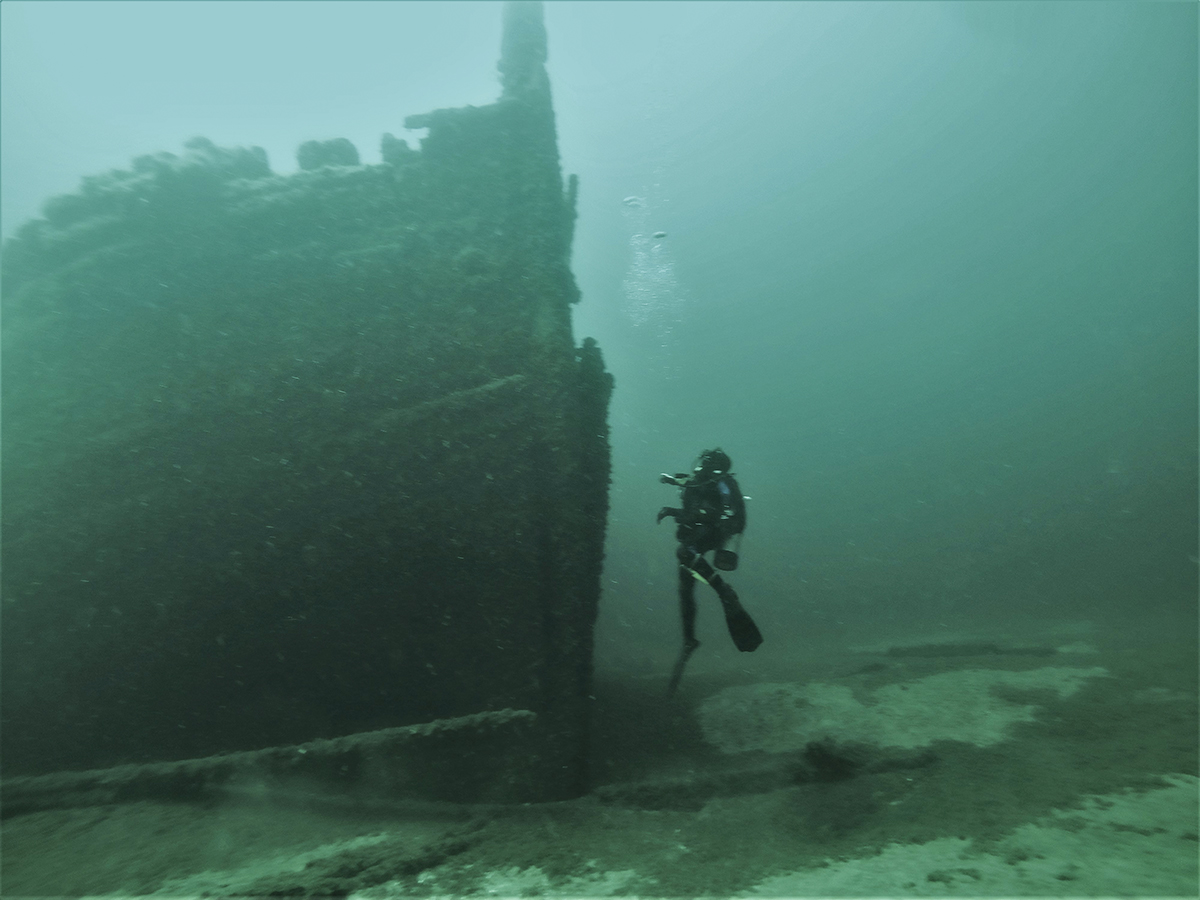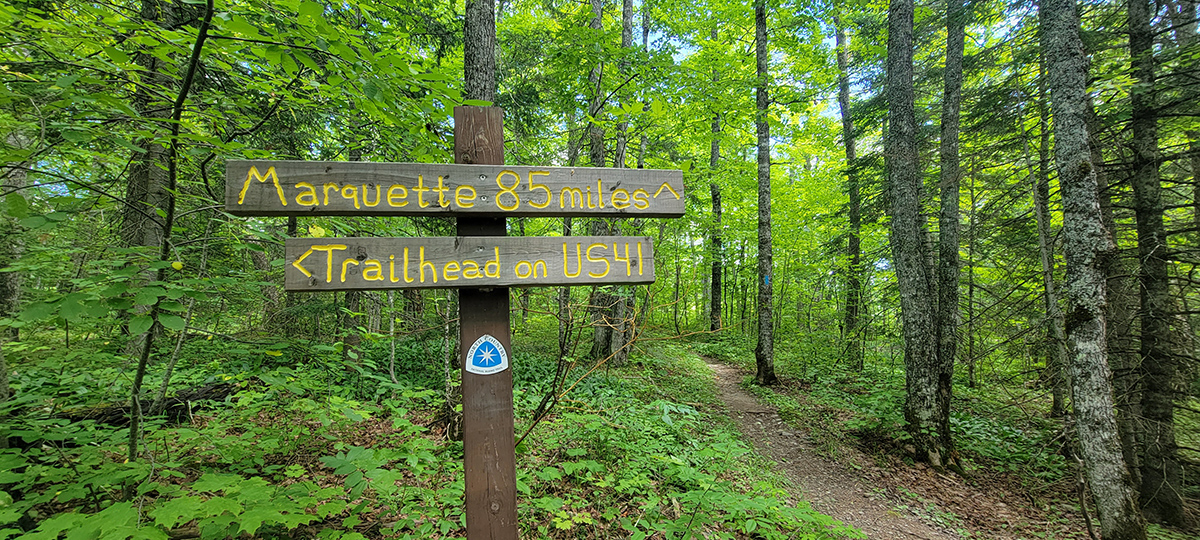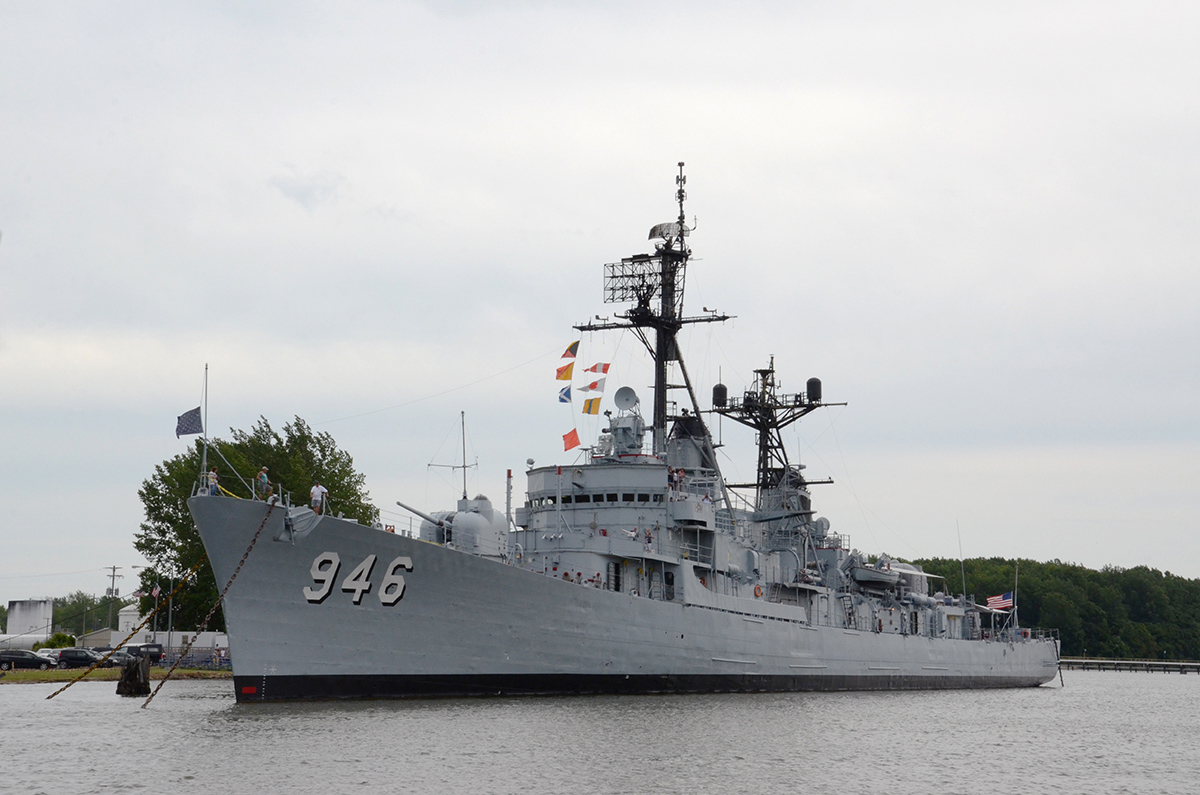WRITER | LISA BECKER CAMPBELL
PHOTO | KEVIN AILES
Michigan Port Towns, Shipping, and the Shipwrecks
For hundreds of years, achieving prosperity in the Midwest was inevitably paired with a partner both terrific and terrible: the ultimately unconquerable Great Lakes.
Progress was attained by those who could successfully harness the expansive waterways. Today, these endeavors are evident in the burgeoning traffic of the Great Lakes shipping industry, while the historical sacrifices are exemplified by thousands of wrecks below.
As in the past, the public continues to be mesmerized by both. Crowds gather along the shoreline to witness historic schooners under full sail or freighters as long as the Eiffel Tower as they navigate the Soo Locks. Meanwhile, passionate divers explore “ghost ships” found beneath the surface.
A Bit of History
From the beginning, the Great Lakes and a vast network of rivers have provided a natural transportation system linking the Midwestern states and portions of Canada to the rest of the world.
Commercial shipping began with sailing ships bound for Great Lakes ports in the days of the early colonists. Newcomers naturally established early lumbering and manufacturing businesses along the shorelines. In the early 1800s, despite the nation’s new network of roads, waterways continued as the preferred mode of transportation. Canals such as the Soo Locks were built to extend the water’s reach into the nation’s interior, and decades of canal building spearheaded new prosperity.
Maritime commerce expanded, fueled by industrial growth and the production of iron ore, lumber, and grains. Port cities such as Cleveland and Milwaukee emerged. Detroit became the center of the fur trade in the 18th and 19th centuries, and Chicago was one of the busiest shipping ports in the world in the latter century, with Great Lakes ships providing nearly every commodity.
And Now
Today, Michigan has 27 port towns, ranging in size from the Detroit/Wayne County Port Authority on the east side of the mitten, to smaller communities like Ferrysburg on the west. There are ports cities on all of the Great Lakes as well as the rivers of the Saint Lawrence Seaway Waterway system, which connects the lakes to the North Atlantic at the Gulf of Saint Lawrence in Canada.
The Great Lakes/Saint Lawrence Seaway system boasts the most port cities in North America by far, with 134. It comprises eight states and the provinces of Ontario and Quebec as well as 11 waterways (second only to Mississippi, which has 12).
Despite dips in certain cargo categories over the last decade, the overall predictions are promising for Great Lakes shipping, according to the Ohio-based Lake Carriers’ Association. The 13 member companies of the association operate vessels and tugs that carry more than 90 million tons of cargo each year.
Two factors supporting their forecast are the projected trend of land-based transportation becoming more congested and several significant investment projects currently under way. One such project, undertaken by Muskegon’s Port City Barge, was the recent investment of over $40 million for the overhaul of Commander, a freight barge contracted to haul concrete for St. Marys Cement out of Charlevoix (which is also in the midst of expansion).
Detroit’s recent renaissance as a stronger port city is another indicator of an upward trend, as is the rapidly growing tourism machine. The sportfishing industry alone contributes $5 billion to Michigan’s economy.
As part of North America’s largest inland transportation corridor, 60,000 jobs in the United States and Canada depend directly on the movement of cargo on the Great Lakes.
The Treacherous Lakes
Sailing the Great Lakes is not without risk. The lakes have claimed over 6,000 ships — although some estimates suggest the number is closer to 25,000 — and more than 30,000 lives. Unpredictable weather including fog, squalls, and winter storms makes them some of the most dangerous waters in the world.
Lake Michigan alone has lost roughly 2,000 vessels and thousands of lives. To blame are the prevailing northwest winds that have the full 400-mile length of the lake to gain strength as well as heavy passenger and cargo trade headed to Chicago, Milwaukee, and the many small lakefront communities on both the eastern and western shores. To date, roughly 300 shipwrecks have been found in the depths of Lake Michigan, and more are found every year.
For centuries, Le Griffon has been the most pursued wreck. Le Griffon is perhaps the earliest shipwreck yet to be uncovered. A French explorer who believed the Great Lakes were the gateway to the unknown west chartered Le Griffon with dreams of reaching China and revolutionizing the fur trade. But the ship went down in September 1679. Many claim to have discovered the French possession, but all, with only a few exceptions, have been disproved.
Other notable wrecks in the Great Lakes include:
- SS Eastland, lost in 1915, is renowned for the largest number of casualties — 844 — despite being only 20 feet from the wharf in the shallow waters of the Chicago River. The steamer was hired to transport Illinois factory workers to a picnic in Michigan City, Indiana. She had reached capacity at 2,572 passengers when the steamer rolled completely onto her port side due to a series of unfortunate events.
- SS Edmund Fitzgerald was the largest ship to succumb to a Great Lakes storm. She was lost in 1975 in hurricane-force winds and 35-foot waves, and all 29 of the crew perished. There were no distress signals, and the cause remains unknown.
- Rouse Simmons, which may be the most beloved ghost ship, went down in a 1912 storm. The vessel delivered Christmas trees to Chicago to be sold on the downtown pier along the Chicago River, where customers were welcomed aboard the festively decorated ships.
Protecting the Wrecks
Many agencies are in place to preserve and protect known shipwrecks for generations to come.
The National Oceanic and Atmospheric Administration (NOAA) is one such organization, with its national marine sanctuaries. The Thunder Bay National Marine Sanctuary is home to more than 50 wrecks in a 48-square-mile area and is considered among America’s best-preserved and nationally significant collections. Located in northwestern Lake Huron, Thunder Bay sits in “Shipwreck Alley,” one of the most treacherous stretches of water within the Great Lakes system.
The Michigan Underwater Preserve Council maintains 13 underwater preserves viewable by dives or charters. “We have some of the greatest diveable shipwrecks in the world,” stated Kevin Ailes, President of Southwest Michigan Underwater Preserve Council, a private nonprofit 501(c)(3) organization.
“The Preserves are a magnificent resource,” stated Ailes. Most of the nondiving public is unaware of the treasures that the Great Lakes hold; many shipwrecks can be appreciated and viewed by those who do not scuba dive. Some are visible through glass-bottomed boat tours or even by recreational boaters and snorkelers. Unique perspectives can be found via Google Earth, and some are even visible from the shore.
Most recently, a hulking structure of ice-covered wood was unearthed on the shore near Muskegon, drawing crowds of curious onlookers. The brutal winter, huge ice packs, and shifting currents and sands revealed the structure, but researchers could not be certain of its origin, a phenomenon that contributes to the allure of these wrecks.
Lake enthusiasts can also indulge their passions via alternative venues. The Michigan Shipwreck Research Association operates a virtual museum, sharing some of the many exhibits produced in an online format.
The Tri-Cities Historical Museum in Grand Haven is currently running a special exhibit through September 2019, entitled ICEBOUND – the Ordeal of the SS Michigan. In 1855, during one of the most brutal winters on record, the steamship left Grand Haven on a rescue mission but soon became trapped herself in the pack ice. The ship sank after a 38-day battle with Mother Nature, but all 30 crew members survived. Video presents underwater views of the actual steamship as she rests today on the bottom of Lake Michigan, just 18 miles offshore.
There are many resources available to those wishing to learn more about shipping on the Great Lakes. A quick Google search will provide information on organizations scattered around the state whose sole mission is to educate visitors about the importance of this industry both to Michigan’s history and to our economy.
Sources
Great Lakes Maritime Center Port Huron, (810) 985-4817
Michigan Underwater Preserve Council, MichiganPreserves.org
Discovery Center, Pier & Collaborative, DiscoveryGreatLakes.org
Southwest Michigan Underwater Preserve Committee, (269) 584-1968
Michigan Shipwreck Research Association, MichiganShipwrecks.org
Lake Carriers’ Association, lCAShips.com








